
Gordon Rupert Dickson was a Canadian-American science fiction writer. He was inducted into the Science Fiction and Fantasy Hall of Fame in 2000.

The Encyclopedia of Fantasy is a 1997 reference work concerning fantasy fiction, edited by John Clute and John Grant. Other contributors include Mike Ashley, Neil Gaiman, Diana Wynne Jones, David Langford, Sam J. Lundwall, Michael Scott Rohan, Brian Stableford and Lisa Tuttle.
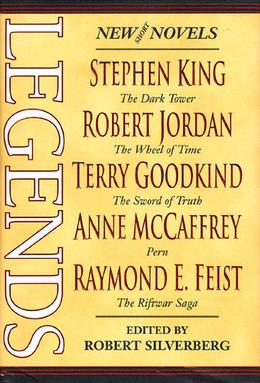
Legends: Short Novels by the Masters of Modern Fantasy is a 1998 anthology of 11 novellas by a number of English-language fantasy authors, edited by Robert Silverberg. All the stories were original to the collection, and set in the authors' established fictional worlds. The anthology won a Locus Award for Best Anthology in 1999. Its science fiction equivalent, Far Horizons, followed in 1999.
Charles Leonard Harness was an American science fiction writer.
Geoff Taylor is an English fantasy artist.

Robert Paul Holdstock was an English novelist and author best known for his works of Celtic, Nordic, Gothic and Pictish fantasy literature, predominantly in the fantasy subgenre of mythic fiction.

Mythago Wood is a fantasy novel by British writer Robert Holdstock, published in the United Kingdom in 1984. Mythago Wood is set in Herefordshire, England, in and around a stand of ancient woodland, known as Ryhope Wood. The story involves the internally estranged members of the Huxley family, particularly Stephen Huxley, and his experiences with the enigmatic forest and its magical inhabitants. The conception began as a short story written for the 1979 Milford Writer's Workshop; a novella of the same name appeared in the September 1981 edition of The Magazine of Fantasy & Science Fiction.

Lavondyss also titled Lavondyss: Journey to an Unknown Region is a fantasy novel by British writer Robert Holdstock, the second book in his Mythago Wood series. Lavondyss was originally published in 1988. The name of the novel hints at the real and mythological locales of Avon, Lyonesse, Avalon and Dis; within the novel Lavondyss is the name of the remote, ice-age heart of Ryhope wood.
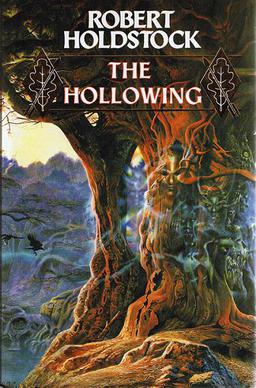
The Hollowing is a fantasy novel by British writer Robert Holdstock, the third in the Mythago Wood series written. It was originally published in 1993. The title refers to a magical pathway, or hollowing, an archaic English term for a sunken lane or hollow-way. The Hollowing was inspired by the story Sir Gawain and the Green Knight.

Byron Roberts, also known as Byron A. Roberts, is the vocalist/lyricist and founder of the British symphonic extreme metal band Bal-Sagoth. He is also the author of "The Chronicles of Caylen-Tor" book series published by DMR Books, as well as the author of several short stories and poems which have been published in various fantasy and horror fiction anthologies. Originally hailing from Yorkshire, England, and also holding full Canadian citizenship due to many years spent living in Ontario and Quebec, Roberts graduated from Sheffield Hallam University with an Honours Degree in English, writing his final year thesis on the genres of pulp fantasy, science fiction and horror, and more specifically the works of H.P. Lovecraft. Roberts originated Bal-Sagoth's concept and writes all the lyrics for the band, having performed the vocals on all six Bal-Sagoth albums to date as well as the band's 1993 demo.

Phyllis Eisenstein was an American author of science fiction and fantasy short stories as well as novels. Her work was nominated for both the Hugo Award and Nebula Award.

Lisa Gracia Tuttle is an American-born science fiction, fantasy, and horror author. She has published more than a dozen novels, seven short story collections, and several non-fiction titles, including a reference book on feminism, Encyclopedia of Feminism (1986). She has also edited several anthologies and reviewed books for various publications. She has been living in the United Kingdom since 1981.
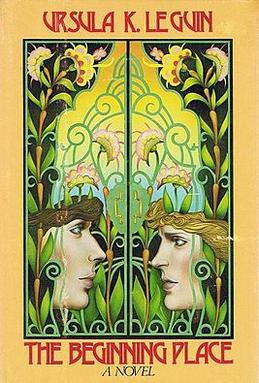
The Beginning Place is a short novel by American writer Ursula K. Le Guin, written in 1980. It was subsequently published under the title Threshold in 1986. The story's genre is a mixture of realism and fantasy literature. The novel's epigraph "What river is this through which the Ganges flows?" is quoted from Jorge Luis Borges. The novel has been subject to critical studies comparing it to C.S. Lewis' The Chronicles of Narnia, Lewis Carroll's Through the Looking-Glass and William Shakespeare's As You Like It.
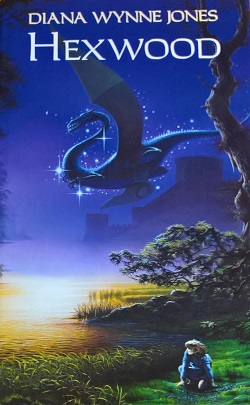
Hexwood is a 1993 fantasy/science fiction novel for young adults. It is by British author Diana Wynne Jones.

Gate of Ivory, Gate of Horn is a fantasy novel by British author Robert Holdstock. It was originally published in the United States in 1997 The story is a prequel to Mythago Wood and explores Christian Huxley's quest into Ryhope Wood and the apparent suicide of his mother, Jennifer Huxley. The title of the book refers to the gates of horn and ivory described in both Homer's Odyssey and Virgil's Aeneid.
This is a bibliography of fantasy author Robert Holdstock.
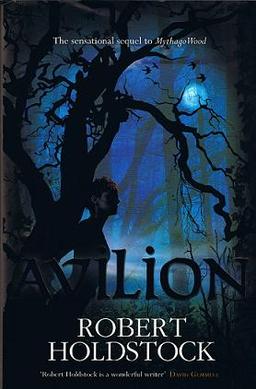
Avilion is a fantasy novel by British author Robert Holdstock. It was published in the United Kingdom on July 16, 2009. It is his first Ryhope wood novel since Gate of Ivory, Gate of Horn was published in 1997. Avilion is Tennyson's term for Avalon in Idylls of the King. Avilion is described by Tennyson as an island valley with ideal weather and fertile land.
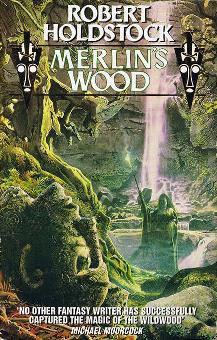
Merlin's Wood; or, The Vision of Magic is a short novel by British writer Robert Holdstock, first published in the United Kingdom in 1994. The novel is considered part of the Mythago Wood cycle, but takes place in Brittany, France instead of Herefordshire, England. The work has all new characters and focuses on the mythical birthplace and burial site of Merlin, the magical wood Brocéliande. Brocéliande is a smaller version of Ryhope wood where British myth predominates.
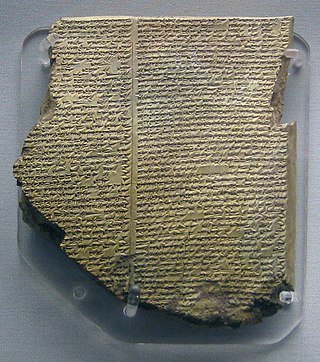
Immortality is a common theme in fiction. The concept has been depicted since the Epic of Gilgamesh, the oldest known work of fiction. Originally appearing in the domain of mythology, it has later become a recurring element in the genres of horror, science fiction, and fantasy. For most of literary history, the dominant perspective has been that the desire for immortality is misguided, albeit strong; among the posited drawbacks are ennui, loneliness, and social stagnation. This view was challenged in the 20th century by writers such as George Bernard Shaw and Roger Zelazny. Immortality is commonly obtained either from supernatural entities or objects such as the Fountain of Youth or through biological or technological means such as brain transplants.
The mythical wizard Merlin is featured as a character in numerous works of fiction, especially those based on Arthurian legends. Modern media frequently reimagines Merlin, and the Arthurian mythos more generally, changing Merlin's age, allegiances, family, and personal history.















